28.08.2020
UAE’s Hope probe spots Mars for the very first time on its maiden voyage through space
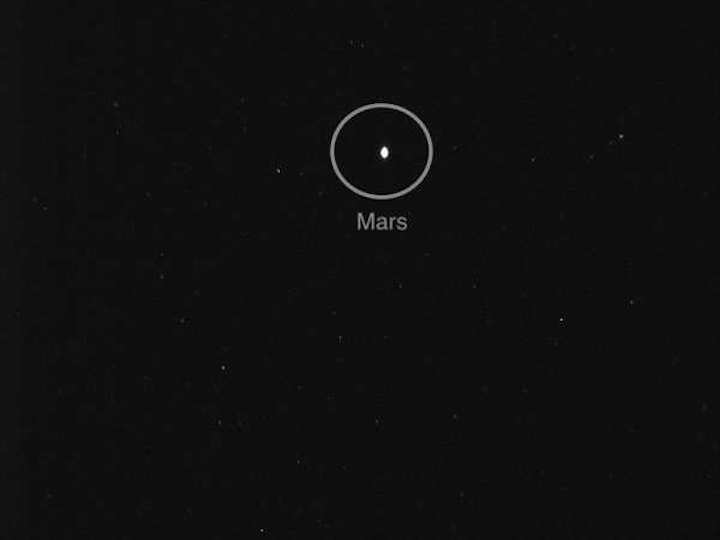

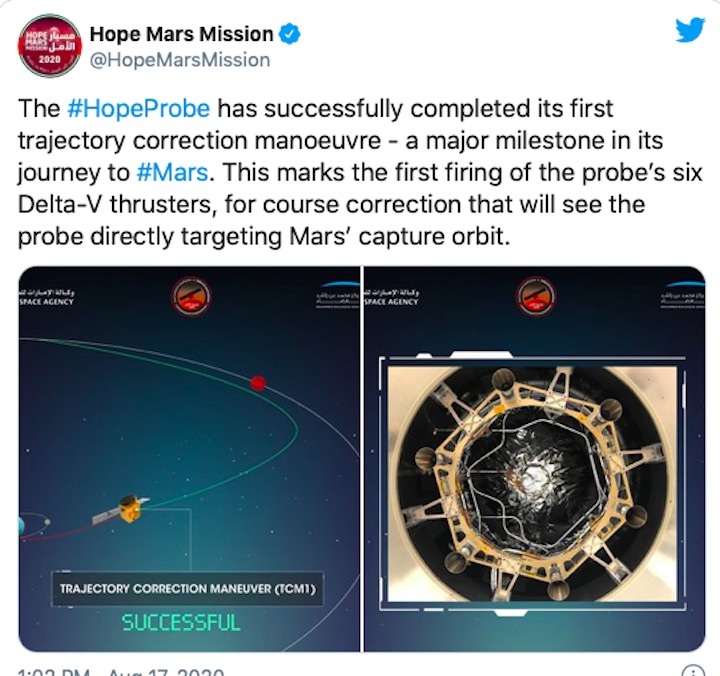
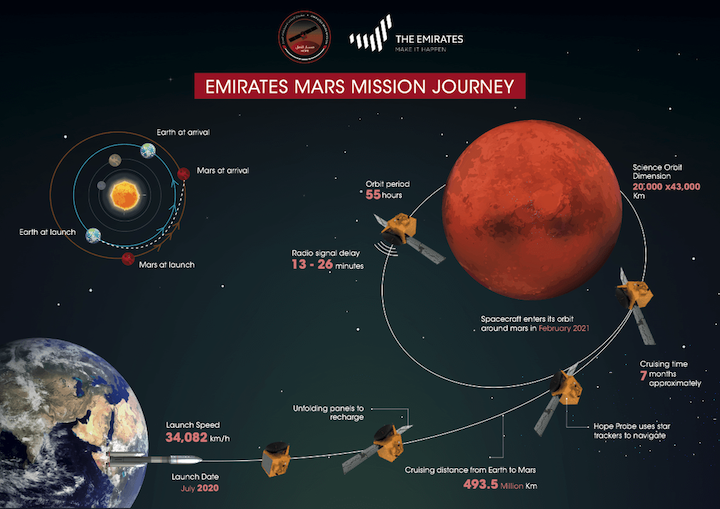
Quelle: UAE
----
Update: 12.11.2020
.
The UAE's 1st Mars probe will reach the Red Planet on Feb. 9
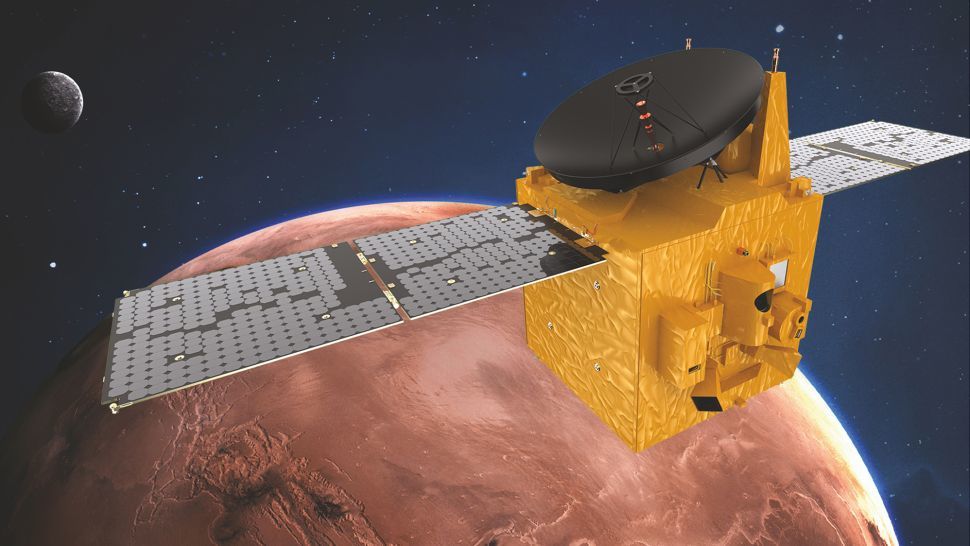
An artist's depiction of the UAE's Hope Mars orbiter.
The United Arab Emirates' first mission to Mars will reach the Red Planet on Feb. 9, 2021, Emirates government officials said Sunday (Nov. 8).
The mission's Hope orbiter should arrive at Mars in the same year as the 50th anniversary of the country's formation, UAE officials said in a statement just after Hope successfully completed its third trajectory correction.
The Hope mission, added Crown Prince Hamdan bin Mohammed Rashid Al Maktoum in the same statement, "marks the beginning of another 50 years that will bring about major achievements based in the fields of science, knowledge and innovation." The UAE is using the mission as a spur to encourage science innovation among researchers and educators in the country, the release stated.
Should Hope make it safely to Mars, the UAE will be the fifth entity to successfully send a mission to the Red Planet after NASA, the Soviet Union, the European Space Agency and the Indian Space Research Organisation. So far the spacecraft has made it 60% of the way to Mars since its launch on July 20. It is expected to make a fourth, smaller trajectory correction maneuver on Dec. 29.
As Hope cruises to Mars, its ground team in Dubai checks on the spacecraft's health two or three times a week. The last major phase will be mission orbit insertion, which will require the probe to slow itself down and enter orbit around Mars without real-time help from Earth. (Signals from Earth to Mars typically take 13 to 26 minutes for a one-way journey.)
Hope is gathering some science observations along the way to the Red Planet. In the coming months, it will observe hydrogen near Mars using a spectrometer, and examine interplanetary dust using star trackers, Emirate Mars Mission project director Omran Sharaf said in the same statement.
Hope's hydrogen observations will be calibrated with a spectrometer on Japan's and ESA's BepiColombo spacecraft, which just swung by Venus a few weeks agoon its seven-year journey to Mercury. The data that Hope and BepiColombo gather should provide more information concerning how hydrogen is distributed between planets, the UAE government stated.
The Mars science phase of the mission will begin about 75 days after orbit insertion. Hope's orbit will range between approximately 620 miles to 30,500 miles (1,000 kilometers to 49,000 km) above the Martian surface.
The spacecraft is expected to remain in orbit and gathering data for at least a full Martian year, which is 687 Earth days. Some of Hope's scientific contributions will include the first planet-wide examination of Martian atmospheric dynamics and weather, according to the UAE.
Quelle: SC
----
Update: 6.02.2021
.
The United Arab Emirates’ Hope orbiter is about to arrive at Mars
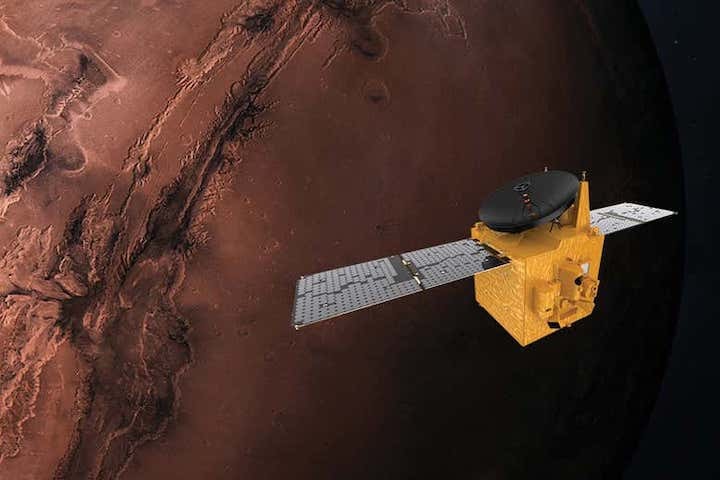
Alexander McNabb/MBRSC
The Hope orbiter is arriving at Mars. This uncrewed spacecraft is the United Arab Emirates’ first interplanetary mission and will enter orbit on 9 February, after which it will start to build the most complete picture of the Martian atmosphere we have had.
“The team has prepared as well as they can possibly prepare to reach orbit on Mars,” said Sarah Al-Amiri, the chair of the UAE space agency and the science lead for the mission, during a press conference on 28 January.
That preparation is crucial – it will take 11 minutes for a signal from Hope to reach Earth, so the entire operation to enter Mars’s orbit will be on autopilot. If anything goes wrong, the probe is pre-programmed to deal with various problems by itself during the 27 minutes the thrusters will fire to put the spacecraft into a stable orbit.
“By the time we see the start of the burn, it’s already almost halfway complete,” said Pete Withnell at the University of Colorado Boulder, a programme manager for the mission, during the press conference. “We are observers, and we get to see what’s happening, but we do not interact in real time.”
Watching the spacecraft’s delayed signals will be nerve-wracking, says Omran Sharaf at the Mohammed Bin Rashid Space Centre in Dubai, another programme manager. “Firing the thrusters for 27 minutes non-stop is something we haven’t done before,” he says. “We couldn’t test it on Earth because if we did, we could have damaged the spacecraft, so we could only test it for a few seconds.” Even the small manoeuvres that the craft has performed on its way to Mars only required the thrusters to fire for a minute or less.
Once in orbit, Hope will provide us with an unprecedented view of Mars. The six other active craft orbiting the planet follow paths around the equator which line up with its rotation in such a way that they can only see any particular area of the surface at one time of day. Hope, on the other hand, will circle the equator, allowing it to get a complete picture of the planet every nine days – including every spot on the surface at every time of day.
The spacecraft carries three main scientific instruments that will allow it to observe Mars’s atmosphere in wavelengths from the infrared into the far-ultraviolet. “For the first time, the world will receive a holistic view of the atmosphere,” says Sharaf.
The goal is to study how the different layers of the atmosphere interact with one another and how those interactions change depending on the time of day and year. This will help us answer the long-standing question of how gas escapes from the Martian atmosphere and floats away into space, a process which keeps Mars cold and dry, rather than warm and damp as it may once have been.
If Hope enters orbit safely, scientists and engineers will then spend two months testing the spacecraft and its scientific instruments before starting to take measurements of Mars. “Hopefully by September 2021 we will have science data that we can share,” says Sharaf.
Quelle: NewScientist
+++
Hope prepares to enter orbit around Mars
WASHINGTON — As the United Arab Emirates’ Hope spacecraft arrives at Mars, those involved with the mission have a mix of confidence and concern about the chances of successfully entering orbit.
The Emirates Mars Mission, or Hope, spacecraft will arrive at Mars Feb. 9, entering orbit at about 10:41 a.m. Eastern. The spacecraft will fire its main thrusters for 27 minutes to slow it down enough for the planet’s gravity to capture the spacecraft into orbit.
The maneuver is one of the most critical phases of the mission after its launch in July 2020. Failure to perform the maneuver as planned could prevent the spacecraft from entering orbit or even cause it to collide with the planet, as happened with NASA’s Mars Climate Orbiter mission in 1999.
“This is a heavily rehearsed, designed, tested maneuver,” said Sarah Al Amiri, UAE minister of state for advanced technology and chairperson of the UAE Space Agency, during a Feb. 1 webinar. “But we have never used our thrusters for 27 minutes continuously. We’re going to burn half of our fuel.”
“Seven years’ worth of work involving a team of amazing individuals from several continents rests on the fate of Mars orbit insertion, which is not an easy maneuver,” she said, describing her mixed feelings as “comfortable and uncomfortable, worried and not worried.”
Others involved in the Hope mission are more confident. “The spacecraft is very healthy,” said Pete Withnell, program manager for the Emirates Mars Mission at the University of Colorado’s Laboratory for Atmospheric and Space Physics (LASP), which worked with the UAE to assemble the spacecraft and provided some of its instruments. The spacecraft is also on its planned trajectory, he said during a Jan. 28 briefing.
The thrusters that will be used for the orbit capture maneuver have been tested many times for short burns, including course corrections after launch. The key, he said, is to start the maneuver on time. “That is most likely the riskiest part of the maneuver.”
“This is a highly practiced, highly simulated, highly analyzed event,” he said. “I cannot imagine being better prepared than we are right now. We are very fortunate to have a very healthy spacecraft, and everything is looking very good at the moment. I’m optimistic.”
Those preparations do come with some stress. Withnell described engineers waking up in the middle of the night “in a cold sweat, thinking and rethinking” aspects of the mission. “That’s healthy for the mission, but not so healthy for the individuals.”
Should Hope make it into orbit, it will use its suite of three instruments to provide a comprehensive view of the Martian atmosphere, including tracking the planet’s weather and studying processes by which gasses escape the atmosphere into space.
Those studies will begin later in the year, once the spacecraft maneuvers into its final orbit between 20,000 and 43,000 kilometers in altitude. The orbit will allow the spacecraft to capture a complete view of the planet’s atmosphere, across the planet and at different times of day, every nine days.
“There’s about to be a fire hose of data headed my way,” said David Brain, deputy science lead for the mission at LASP. Like Withnell, he felt optimistic about the upcoming orbit insertion maneuver. “There’s a chance that it might not go well, and we’ll deal with that if it happens.”
The mission is a flagship for the UAE’s young space program, demonstrating its capabilities and serving as a symbol of the country’s technological achievements, both for its citizens and those in the Gulf region. The mission coincides with the UAE’s 50th anniversary.
“We’re seeing a lot of excitement” in the country, said Al Amiri, including billboards counting down until Hope’s arrival at Mars. “There’s a lot of support.”
The mission is the first of three arriving at Mars this month, and will be followed Feb. 10 by China’s Tianwen-1 spacecraft, which will go into orbit before deploying a lander with a rover, likely in May. NASA’s Mars 2020 mission will land the rover Perseverance on Mars Feb. 18.
Simply getting Hope built and launched, particularly amid the disruptions of the pandemic, was a major achievement, but Al Amiri said she wasn’t ready to declare Hope a success even if it does make it into orbit. “For me to declare mission success is very hard to do,” she said. “It’s a continuous learning experience. It’s a continuous mission.”
Quelle: SN
----
Update: 8.02.2021
.
UAE's 'Hope' probe to be first in trio of Mars missions

The first Arab space mission, the UAE's "Hope" probe, is expected to reach Mars' orbit on Tuesday, making it the first of three spacecraft to arrive at the Red Planet this month.
The United Arab Emirates, China and the United States all launched projects to Mars last July, taking advantage of a period when the Earth and Mars are nearest.
If succesful, the wealthy Gulf state will become the fifth nation to ever reach Mars -- a venture timed to mark the 50th anniversary of the unification of the UAE -- with the China mission due to become the sixth the following day.
Landmarks across the UAE have been lit up in red at night, government accounts emblazoned with the #ArabstoMars hashtag, and on the big day Dubai's Burj Khalifa, the world's tallest tower, will be at the centre of a celebratory show.
"Hope", known as "Al-Amal" in Arabic, will orbit the planet for at least one Martian year, or 687 days, while the Tianwen-1 from China and the Mars 2020 Perseverance rover from the US will both land on Mars' surface.
Only the US, India, the former Soviet Union and the European Space Agency have successfully reached the Red Planet in the past.
- Risky manoeuvre -
After blasting off from Japan last July, the Hope mission now faces its "most critical and complex" manoeuvre, according to Emirati officials, with a 50-50 chance of successfully entering a Mars orbit.
The spacecraft must slow significantly to be captured by Martian gravity, rotating and firing all six of its Delta-V thrusters for 27 minutes to reduce its cruising speed of 121,000 kilometres (about 75,000 miles) per hour to about 18,000 kph.
The process, which will consume half of its fuel, will begin on Tuesday at 1530 GMT and it will take 11 minutes for a signal on its progress to reach ground control.
Omran Sharaf, the UAE mission's project manager, said it was a "huge honour" to be the first of this year's missions to reach Mars.
"It is humbling to be in such auspicious and skilled company as we all embark on our missions," he said. "It was never a race for us. We approach space as a collaborative and inclusive effort."
While the Hope probe is designed to provide a comprehensive image of the planet's weather dynamics, it is also a step toward a much more ambitious goal -- building a human settlement on Mars within 100 years.
While cementing its status as a key regional player, the UAE also wants the project to serve as a source of inspiration for Arab youth, in a region too often wracked by sectarian conflicts and economic crises.
Hope will use three scientific instruments to monitor the Martian atmosphere, and is expected to begin transmitting information back to Earth in September 2021, with the data available for scientists around the world to study.
- Close behind -
China's Tianwen-1, or "Questions to Heaven", has already sent back its first image of Mars -- a black-and-white photo that showed geological features including the Schiaparelli crater and the Valles Marineris, a vast stretch of canyons on the Martian surface.
The five-tonne Tianwen-1 includes a Mars orbiter, a lander and a solar-powered rover that will for three months study the planet's soil and atmosphere, take photos, chart maps and look for signs of past life.
China hopes to land the 240-kilogramme rover in May in Utopia, a massive impact basin on Mars. Its orbiter will last for a Martian year.
Tianwen-1 is not China's first attempt to reach Mars. A previous mission with Russia in 2011 ended prematurely when the launch failed.
NASA's Perseverance, which is set to touch down on the Red Planet on February 18, will become the fifth rover to complete the voyage since 1997 -- and all so far have been American.
It is on an astrobiology mission to look for signs of ancient microbial life and will attempt to fly a 1.8 kilogramme helicopter-drone on another world for the first time.
Perseverance, capable of autonomously navigating 200 meters (650 feet) per day, will collect rock samples that could provide invaluable clues about whether there was ever past life on Mars.
About the size of a small SUV, it weighs a metric tonne, has 19 cameras and two microphones -- which scientists hope will be the first to record sound on Mars.
The mission is set to last at least two years.
Emirati 'Hope' probe approaches Mars
Dubai (AFP) Feb 7, 2021 - The first Arab interplanetary mission is expected to reach Mars' orbit Tuesday in what is considered the most critical part of the journey to unravel the secrets of weather on the Red Planet.
The unmanned probe -- named "Al-Amal", Arabic for "Hope" -- blasted off from Japan last year, marking the next step in the United Arab Emirates' ambitious space programme.
Here are some facts and figures about the oil-rich nation's project, which draws inspiration from the Middle East's golden age of cultural and scientific achievements.
- Outsize plans -
The UAE, made up of seven emirates including Dubai and Abu Dhabi, has 12 satellites in orbit, with plans to launch several more in coming years.
In September 2019 it sent the first Emirati into space, Hazza al-Mansouri, who was part of a three-member crew. They blasted off from Kazakhstan, returning home after an eight-day mission in which he became the first Arab to visit the International Space Station.
But the UAE's ambitions go much further, with a goal of building a human settlement on Mars by 2117.
In the meantime, it plans to create a white-domed "Science City" in the deserts outside Dubai to simulate Martian conditions and develop the technology needed to colonise the planet.
The UAE has plans to launch an unmanned rover to the moon by 2024 and is also eyeing future mining projects beyond Earth, as well as space tourism.
It has signed a memorandum of understanding with Richard Branson's space tourism company Virgin Galactic and announced the creation of a "space court" to settle commercial disputes relating to space industries.
- Hope's journey -
The "Hope" probe lifted off from Japan's Tanegashima Space Center on July 20 last year.
The 1,350-kilogramme (2,970-pound) probe -- about the size of an SUV -- took seven months to travel the 493 million kilometres (307 million miles) to Mars.
Officials say that the "most critical and complex" manoeuvre will begin on Tuesday at 1530 GMT, to slow the spacecraft enough to be captured by the gravity of the Red Planet.
The probe will for the first time fire all six of its Delta-V thrusters, for a duration of 27 minutes, to slow its cruising speed of 121,000 kilometres per hour to about 18,000 kph.
The process will consume half of the spacecraft's fuel, and it will take 11 minutes for a signal on its progress to reach Earth.
If successful, one loop around the planet will take 40 hours.
The "Hope" probe will remain in this phase for approximately two months, during which further testing will take place, until it is ready to enter the "science" orbit -- when its data collection work begins.
- Study and inspire -
Unlike the other two Mars ventures this year, the Tianwen-1 from China and Mars 2020 from the United States, the UAE's probe will not land on the Red Planet.
Three instruments mounted on the "Hope" probe will provide a picture of the Mars atmosphere throughout the Martian year -- 687 days.
The first is an infrared spectrometer to measure the lower atmosphere and analyse the temperature structure.
The second is a high-resolution imager that will also provide information about ozone levels. And the third, an ultraviolet spectrometer, is to measure oxygen and hydrogen levels from a distance of up to 43,000 kilometres from the surface.
Studying the atmospheres of other planets will allow for a better understanding of the Earth's climate, officials say, and pave the way for scientific breakthroughs.
But the project is also designed to inspire a region too often beset by turmoil, and recall its heyday of scientific advances during the Middle Ages.
"The UAE wanted to send a strong message to the Arab youth and to remind them of the past, that we used to be generators of knowledge," Omran Sharaf, the mission's project manager, told AFP.
The mission, if successful, would make the UAE the fifth nation to ever reach Mars, and is timed to mark the 50th anniversary of the country's unification.
+++
Sarah al-Amiri: young minister behind UAE mission to Mars
Dubai (AFP) When Sarah al-Amiri was a child growing up in Abu Dhabi with a fascination for space, her young country seemed light years away from reaching for the stars.
Now the 34-year-old is a government minister and one of the drivers of the United Arab Emirates (UAE) ambitious project behind the "Hope" probe that is due to reach the orbit of Mars on Tuesday.
As a youngster poring over images of far-away galaxies, Amiri was enraptured by "the number of stars, solar systems, planets -- objects that exist out there which numerically we can't comprehend".
"But more importantly the ways by which scientists explore it -- be it by telescopes, spacecrafts, radio images," she told AFP.
At that time Abu Dhabi and its sister emirate Dubai were nothing like the metropolises, bristling with skyscrapers, that they are now.
But after a high-speed development drive, the UAE sent its first astronaut into space in 2019 and last year launched the Hope mission to orbit Mars in order to unravel the secrets of the weather on the Red Planet.
The first interplanetary mission for the Arab world, it is designed to inspire young people in the region and pave the way for scientific breakthroughs.
Amiri is now chairwoman of the UAE Space Agency after serving as deputy project manager of the Mars initiative -- roles she never imagined despite her childhood passions.
- Meteoric rise -
After graduating from high school in 2004, Amiri attended the American University of Sharjah, earning Bachelor's and Master's degrees in computer engineering -- her other abiding interest.
"It was a deep fascination into how these objects and computers worked. How they were built. How they were designed. How the hardware operates with the software."
But it was not until she walked into an interview at the Mohammed Bin Rashid Space Centre in Dubai in 2009 that she realised that space would be her destiny.
"I completely fell on it by accident," she said, adding the space centre was looking for engineers so she applied for a job.
Amiri's first job was to work on Dubai Sat-1, the first Emirati Earth observation satellite, and she rapidly rose through the ranks.
She was appointed minister of state for advanced technology in 2017, and became chairwoman of the Space Agency in August.
Also last year, the BBC listed her as one of the 100 most inspiring and influential women of 2020.
Her meteoric rise, along with a clutch of other young Emirati ministers, is a reflection of a country with ambitious plans to become a hub for technology and science, to boost its soft power and diversify its economy away from oil.
- 'Monumental shifts' -
"My life as a person born in the 1980s is completely different from the lives of my parents who were born here in the '40s and '50s," said Amiri.
She said her father's home was hooked to a power generator because they had electricity shortages and "the water they drank had rust in it, it was yellow in colour. They had to filter it using pieces of cloth".
"Yes, we (as Emiratis) do appreciate that organic growth comes, but we cannot survive as a nation by just relying on organic growth. There needs to be large, monumental shifts.
"The Emirates Mars Mission has... inspired the nation to look to the future and look to the skies," Amiri said.
"It has shown that collaboration across nations, geographies, creeds and in the face of remarkable challenges can forge brilliant outcomes for the benefit of us all."
Amiri comes from a line of accomplished women, including doctors, accountants, teachers and bankers.
"My mother is a college graduate. She was a teacher who was quite passionate about what she was doing," said Amiri, herself a mother of two, including an 11-year-old boy who is an avid "Star Wars" fan.
Quelle: SD
----
Update: 9.02.2021
.
Arab spacecraft enters orbit around Mars in historic flight
A spacecraft from the United Arab Emirates has swung into orbit around Mars in a triumph for the Arab world’s first interplanetary mission
DUBAI, United Arab Emirates -- A spacecraft from the United Arab Emirates swung into orbit around Mars on Tuesday in a triumph for the Arab world’s first interplanetary mission.
Ground controllers at the UAE’s space center in Dubai rose to their feet and broke into applause when word came that the craft, called Amal, Arabic for Hope, had reached the end of its seven-month, 300-million-mile journey and had begun circling the red planet, where it will gather detailed data on Mars’ atmosphere.
The orbiter fired its main engines for 27 minutes in an intricate, high-stakes maneuver that slowed the craft enough for it to be captured by Mars’ gravity. It took a nail-biting 11 minutes for the signal confirming success to reach Earth.
Tensions were high: Over the years, Mars has been the graveyard for a multitude of missions from various countries.
A visibly relieved Omran Sharaf, the mission’s director, declared, “To the people of the UAE and Arab and Islamic nations, we announce the success of the UAE reaching Mars.”
Two more unmanned spacecraft from the U.S. and China are following close behind, set to arrive at Mars over the next several days. All three missions were launched in July to take advantage of the close alignment of Earth and Mars.
Amal’s arrival puts the UAE in a league of just five space agencies in history that have pulled off a functioning Mars mission. As the country’s first venture beyond Earth’s orbit, the flight is a point of intense pride for the oil-rich nation as it seeks a future in space.
An ebullient Mohammed bin Zayed, the UAE’s day-to-day ruler, was on hand at mission control and said: “Congratulations to the leadership and people of the UAE. ... Your joy is indescribable.”
About 60% of all Mars missions have ended in failure, crashing, burning up or otherwise falling short in a testament to the complexity of interplanetary travel and the difficulty of making a descent through Mars’ thin atmosphere.
A combination orbiter and lander from China is scheduled to reach the planet on Wednesday. It will circle Mars until the rover separates and attempts to land in May to look for signs of ancient life.
A rover from the U.S. named Perseverance is set to join the crowd next week, aiming for a landing Feb. 18. It will be the first leg in a decade-long U.S.-European project to bring Mars rocks back to Earth to be examined for evidence the planet once harbored microscopic life.
If it pulls this off, China will become only the second country to land successfully on Mars. The U.S. has done it eight times, the first almost 45 years ago. A NASA rover and lander are still working on the surface.
For months, Amal's journey had been tracked by the UAE's state-run media with rapturous enthusiasm. Landmarks across the UAE, including Burj Khalifa, the tallest tower on Earth, have glowed red to mark the spacecraft's anticipated arrival. Billboards depicting Amal tower over Dubai’s highways. This year is the 50th anniversary of the country's founding, casting even more attention on Amal.
If all goes as planned, Amal over the next two months will settle into an exceptionally high, elliptical orbit of 13,670 miles by 27,340 miles (22,000 kilometers by 44,000 kilometers), from which it will survey the mostly carbon dioxide atmosphere around the entire planet, at all times of day and in all seasons.
It joins six spacecraft already operating around Mars: three U.S., two European and one Indian.
Amal had to perform a series of turns and engine firings to maneuver into orbit, reducing its speed to 11,200 mph (18,000 kph) from over 75,000 mph (121,000 kph).
The control room full of Emirati engineers held their breath as Amal disappeared behind Mars' dark side. Then it re-emerged from the planet's shadow, and contact was restored on schedule. Screens at the space center revealed that Amal had managed to do what had eluded many missions over the decades.
“Anything that slightly goes wrong and you lose the spacecraft,” said Sarah al-Amiri, minister of state for advanced technology and the chair of the UAE’s space agency.
The success delivers a tremendous boost to the UAE's space ambitions. The country's first astronaut rocketed into space in 2019, hitching a ride to the International Space Station with the Russians. That's 58 years after the Soviet Union and the U.S. launched astronauts.
Thomas Zurbuchen, NASA’s science mission chief, tweeted congratulations, saying: “Your bold endeavor to explore the Red Planet will inspire many others to reach for the stars. We hope to join you at Mars soon” with Perseverance.
In developing Amal, the UAE chose to collaborate with more experienced partners instead of going it alone or buying the spacecraft elsewhere. Its engineers and scientists worked with researchers at the University of Colorado, the University of California at Berkeley and Arizona State University.
The spacecraft was assembled at Boulder, Colorado, before being sent to Japan for launch last July.
The car-size Amal cost $200 million to build and launch; that excludes operating costs at Mars. The Chinese and U.S. expeditions are considerably more complicated — and expensive — because of their rovers. NASA's Perseverance mission totals $3 billion.
The UAE, a federation of seven skeikhdoms, is looking for Amal to ignite the imaginations of the country's scientists and its youth, and help prepare for a future when the oil runs out.
“Today you have households of every single age group passionate about space, understanding a lot of science,” said al-Amiri, the chair of the space agency. “This has opened a broad range of possibilities for everyone in the UAE and also, I truly hope, within the Arab world.”
Quelle: abcNews
+++
Emirates Mars Mission: Hope probe lines up historic Mars manoeuvre
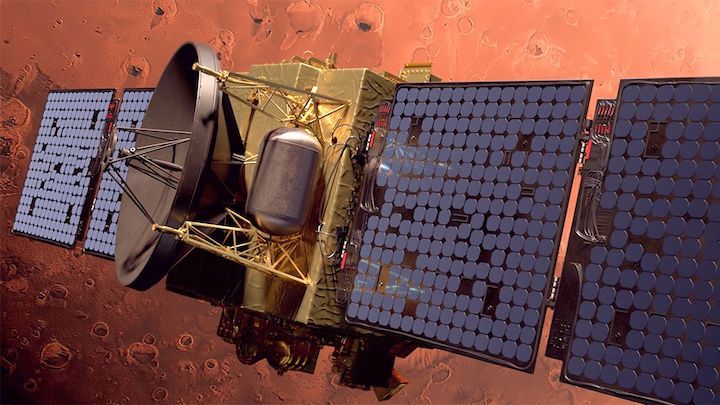
History beckons for the United Arab Emirates as it seeks on Tuesday to place a probe around Mars.
The Hope spacecraft, launched from Earth seven months ago, is about to reach the decisive moment in its long journey - orbit insertion.
Currently moving at over 120,000km/h (75,000mph), it must fire its braking engines for 27 minutes to be sure of being captured by the planet's gravity.
Success would enable Hope to begin its mission to study Mars' climate.
"We're entering a very critical phase," said project director, Omran Sharaf. "It's a phase that basically defines whether we reach Mars, or not; and whether we'll be able to conduct our science, or not.
"If we go too slow, we crash on Mars; if we go too fast, we skip Mars," he told BBC News.
Hope is the first of three missions to arrive at the Red Planet this month. On Wednesday, the Chinese Tianwen-1 orbiter will also try to make it into orbit, while the Americans turn up on the 18th with another big rover.
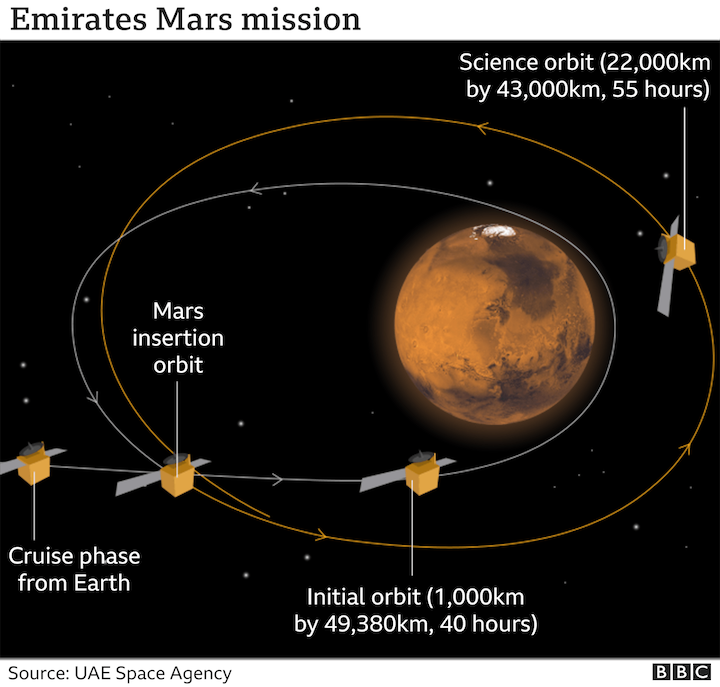
For Hope, everything rides on Tuesday's orbit insertion manoeuvre. In the past couple of months, engineers have trimmed the spacecraft's trajectory so that it reaches the planet at precisely the right moment in space and time to begin the braking burn.
Mission control at the Mohammed bin Rashid Space Center (MBRSC) in Dubai will have some data streaming back on the performance of Hope's thrusters, but there is nothing anyone can do to intervene if something goes awry.
Mars and Earth are presently separated by 190 million km, meaning it would take a radio command fully 11 minutes to reach the probe - too long to make a difference. Hope must rely on autonomy to complete the manoeuvre.
"It's definitely going to be nerve-racking; just thinking about it gives me goose-bumps," said propulsion engineer Ayesha Sharafi. "But we do have a fault-protection system in place that can compensate for any problems that might happen during the burn, so I think we're in a good position for Mars obit insertion to happen successfully."
The confirmation signal that the braking burn has started should be received at Earth just after 19:40 Gulf Standard Time (15:40 GMT). This will come through the US space agency's (Nasa) Deep Space Network of radio dishes.
Hope carries roughly 800 kilos of fuel. About half this mass will be consumed by the six thrusters involved in the 27-minute-long manoeuvre.
Shortly after the engines shut down, the spacecraft will disappear behind Mars as its trajectory bends into the planned initial orbit. Once again, there will be an anxious wait at the MBRSC while the team hangs on Nasa's dish network re-acquiring Hope's signal.
If Tuesday's efforts are successful they will be rewarded with some fascinating science in the months ahead.
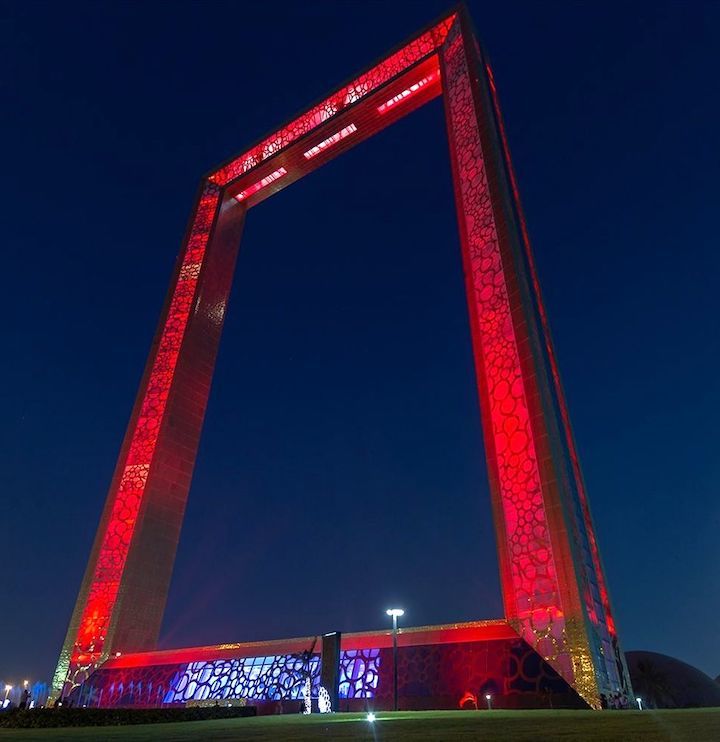
Hope can be described as a kind of weather or climate satellite for Mars.
More specifically, it's going to study how energy moves through the atmosphere - from bottom to top, at all times of day, and through all the seasons of the year.
It will track features such as lofted dust which on Mars hugely influences the temperature of the atmosphere.
It will also look at what's happening with the behaviour of neutral atoms of hydrogen and oxygen right at the top of the atmosphere. There's a suspicion these atoms play a significant role in the ongoing erosion of Mars' atmosphere by the energetic particles that stream away from the Sun.
This plays into the story of why the planet is now missing most of the water it clearly had early in its history.
To gather its observations, Hope will take up a near-equatorial orbit that stands off from the planet at a distance of 22,000km to 44,000km.

This means we will get spectacular images of the whole of the Red Planet on a routine basis.
"Any image we got of Mars would be iconic but I just can't imagine what it's going to feel like to get that first full-disk image of Mars, once we're in orbit," said Sarah Al Amiri, the Emirati minister of state for advanced technology and chair of the UAE Space Agency.
"And for me also, it's getting that science data down and having our science team start analysing it and finding artefacts that haven't been discovered before."
The excitement across the nation is palpable. Buildings are being lit up in red. The UAE is banking on this mission being an inspiration to its youth and Arab youth in general to take up STEM subjects in school and at higher education levels.
The mission was initiated six years ago to come to fruition at the time of the UAE's golden jubilee (The federation was founded on 2 December 1971). Having only recently started (2009) flying satellites at Earth, the nation didn't have the full skill-set to mount an interplanetary mission.
The Emiratis therefore approached a number of US research institutions to engage them in a mentoring role. The American institutions include the University of Colorado at Boulder; Arizona State University; and the University of California, Berkeley.
"It's been fun on a personal level, it's been fun on a technical level, and seeing everybody's personal abilities grow has been tremendously fulfilling," said Pete Withnell, the Hope programme manager at Colorado's Laboratory for Atmospheric and Space Physics.
"There are now personal friendships that will go forward long after this mission."
Quelle: BBC
